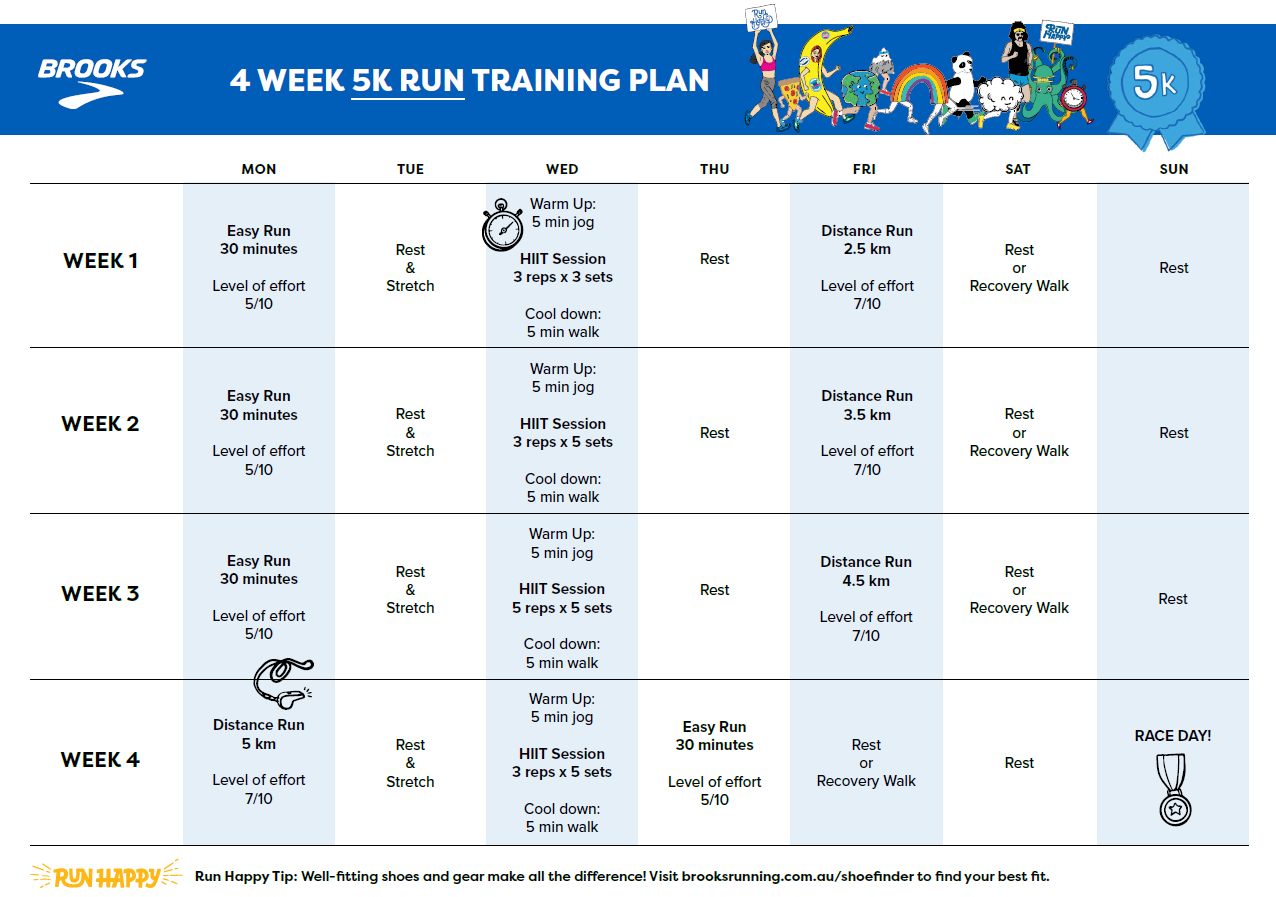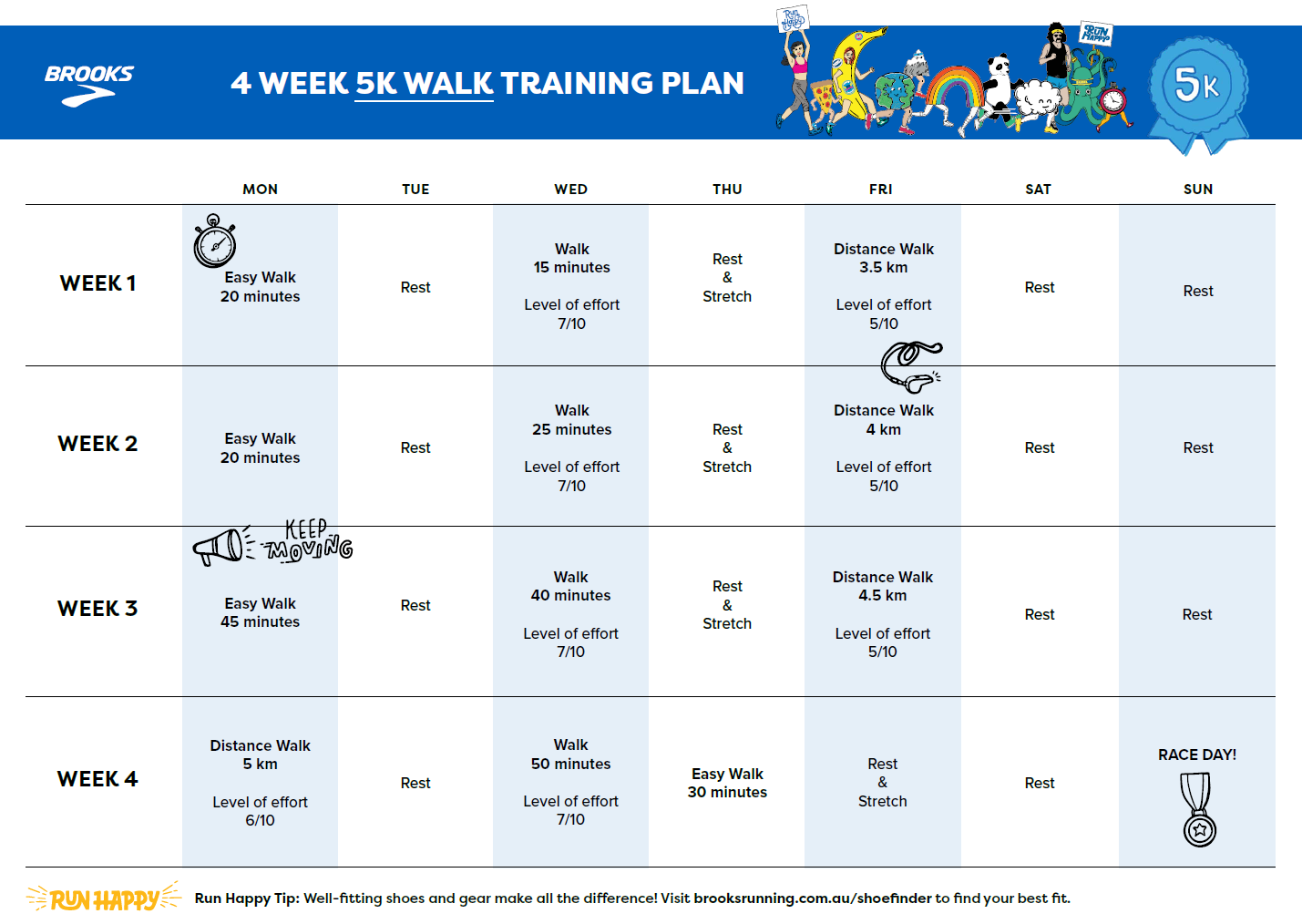The 5K is a perfect introduction to the world of endurance running races. At 5 kilometers, this event provides a fun challenge that most people can train for in a matter of weeks and crush come race day. Not sure where to start your training for a 5K? You’re in the right place. We’ve designed the following four-week program to help you prepare for and enjoy your next 5K race.
‘In my 15 years as a certified personal trainer and running coach, I’ve seen the 5K effectively introduce countless new runners to the sport and act as a fantastic gateway to longer races. Even for more experienced runners, training for a 5K is a great way to start off a season of events’.
Managing your effort
To fully understand how this program works and how to benefit from it, there is a bit of jargon and technical stuff we need to get out of the way.
In preparation for your race, you’re going to start training four weeks before the event and run three days each week with at least one rest day in between. If you need to adjust the exact days, that’s fine. Just make sure to maintain your rest days. The goal of the program is to improve your speed and endurance gradually, with your progress ultimately peaking just in time for your race.
For many of the runs, we’ll be using the rate of perceived exertion (RPE) to manage your level of effort. Essentially, RPE is a scale from zero to 10, where zero would be how much effort it takes you to sit in a chair and do nothing. Somewhat predictably, 10 would be your absolute maximum effort. The beauty of using RPE is that it’s entirely subjective based on how you’re feeling on any given day, which brings up an important point: Throughout your training, it’s important to listen to your body and adjust accordingly. It’s OK, even encouraged, to tailor this plan to your running experience and goals!
HIIT days
You’ll also notice that one day each week is dedicated to high-intensity interval training (HIIT) as a means of increasing your strength and speed. At first glance, these workouts can seem a little overwhelming, so let’s unpack them before you hit the road.
This particular workout consists of one-minute reps that look like this:
- Walk for 30 seconds
- Jog slowly for 20 seconds
- Run fast for 10 seconds
Those reps are then grouped into sets with two-minute walks in between for recovery. For example, for the first HIIT workout, you’ll see it says 3×3. This means three sets of three reps. So you’ll repeat the above pattern three times and then walk for two minutes before repeating the whole thing two more times. During the second week, however, you’ll see it says 3×5. This means three sets of four reps, and so on. Throughout the course of the program, we’ll adjust the number of sets and reps to emphasize different aspects of your fitness.

Go the distance
This workout program is a simple way to get started training for a 5K and lay the groundwork for future, perhaps longer, events. Just remember that your primary goal here is the distance — speed is secondary and can be worked on later. Become comfortable pacing yourself and running for longer periods before you worry about hitting certain time goals.
As you progress, the right shoes for your stride will be an important part of your toolkit, so head over to the Brooks Shoe Finder to select the footwear that will support how you run.
The 5K is a very fun event that often helps people really fall in love with distance running. Enjoy your training, and get out there and crush your next 5K!
Our writer’s advice is intended for informational or general educational purposes only. We always encourage you to speak with your physician or healthcare provider before making any adjustments to your running, nutrition, or fitness routines.
The 5k training plan





